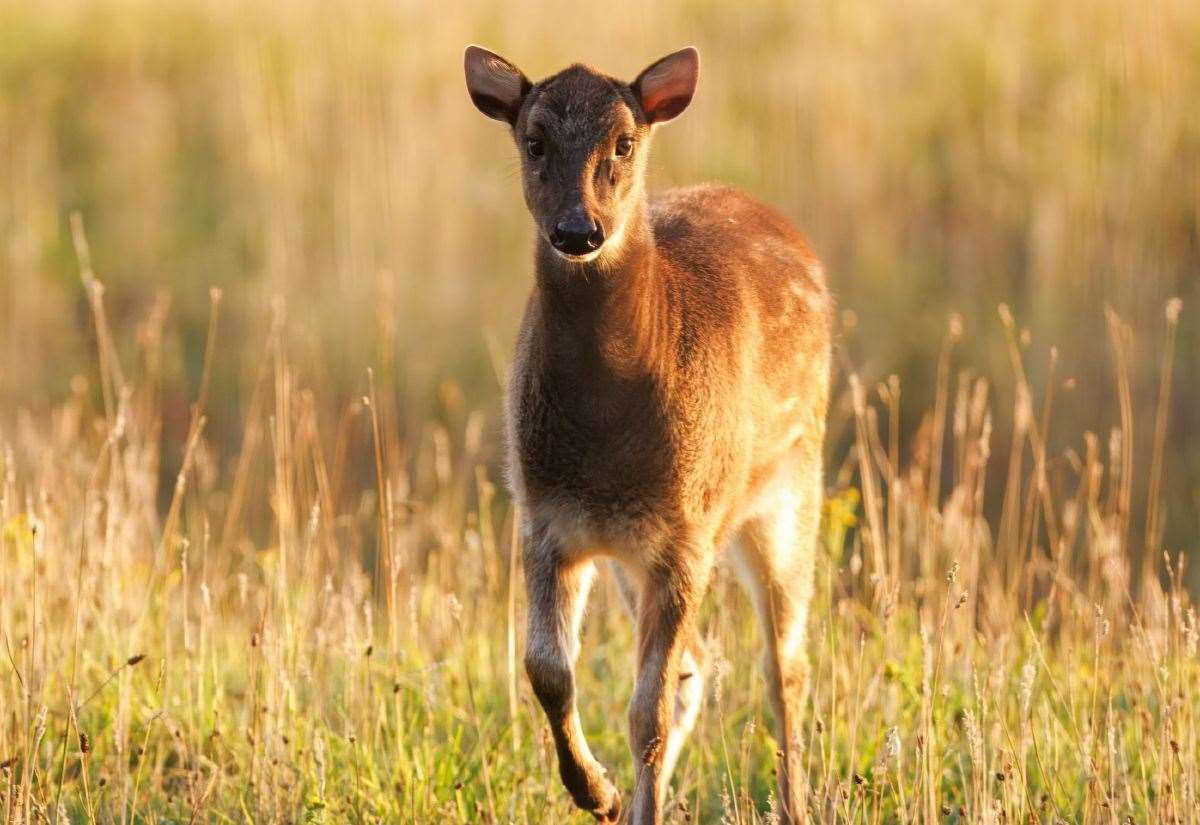The rarest deer species in the world has arrived in West Norfolk after a 1,000-mile journey as part of a European conservation effort.
Watatunga Wildlife Reserve in Watlington is celebrating the arrival of three endangered Visayan spotted deer.
One male and two females have safely arrived after a carefully planned trip across the UK.
A female Visayan spotted deer at Watatunga. Picture: Gareth Clifford
Watatunga Wildlife Reserve is a 170-acre conservation site dedicated to the protection of endangered deer, antelope, and bird species.
The Visayan spotted deer, sometimes called the Philippine spotted deer, is regarded as the most endangered deer species on Earth.
Listed as Endangered on the IUCN Red List, fewer than 700 individuals are believed to remain in the wild, confined to the islands of Negros and Panay in the Philippines.
Visayan Spotted Deer meeting Mouflon at Watatunga. Picture: Phil Stone
Once found across four islands, their range has significantly declined due to habitat loss and hunting for meat, with experts warning that the species could face critically endangered status at its next assessment.
“This is a huge step for us as a reserve,” said Molly Ruder, Reserve Operations Manager at Watatunga.
“To play a role in safeguarding one of the most endangered deer species in the world is a real honour and responsibility.
“We want our visitors, and Norfolk, to feel proud that we are helping secure the future of a species that could otherwise be lost.”
Two of the deers settling in well at the reserve. Picture: Phil Stone
The wildlife reserve focuses on “ethical, hands-off care and immersive visitor experiences”.
The reserve participates in multiple European Endangered Species Programmes, including White Lipped deer, Visayan spotted deer, Eastern Mountain Bongo, and Barasingha.
The new arrivals came from Colchester Zoo, Chester Zoo and Edinburgh Zoo, representing different bloodlines to help strengthen the European endangered species programme.
Two of the female deers spotted with each other. Picture: Phil Stone
The complex logistics required over 250 emails, health screening checks, and coordination between multiple zoos, supported by Watatunga’s specialist ungulate vet.
With all three deer being around one year old, they were able to bond quickly in their new environment, avoiding some of the challenges that can occur when older animals are mixed.
The deer are now settling into their new home, where they’ll enjoy a landscape of grasslands, dense cover, and wetlands that closely mirrors their natural environment.
Visayan Spotted Deer sat together at Watatunga
Their diet of grasses, leaves and browse will be well catered for, with more than 24 species of browsable trees and varied forage available.
They are all showing positive behaviours and bonding well as a group.
The young stag is proving to be particularly attentive, often keeping a close and protective eye on his two females, a touching reminder of just how precious these animals are.
“Moving sensitive species like Visayan spotted deer is never easy, but the effort is absolutely worth it. Each new breeding group in Europe is vital for ensuring this species doesn’t slip further towards extinction,” added Molly.
Watatunga Wildlife Reserve is now one of just eight UK sites and 32 across Europe caring for Visayan spotted deer.
